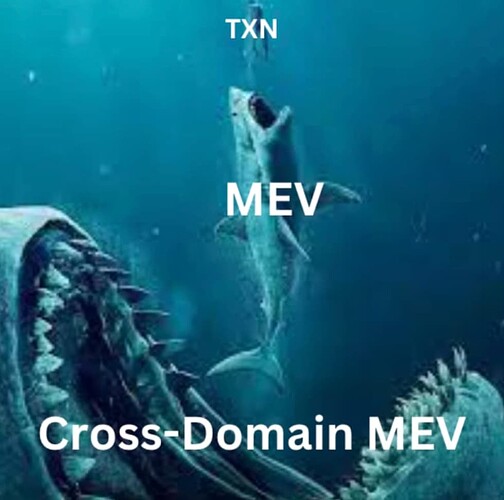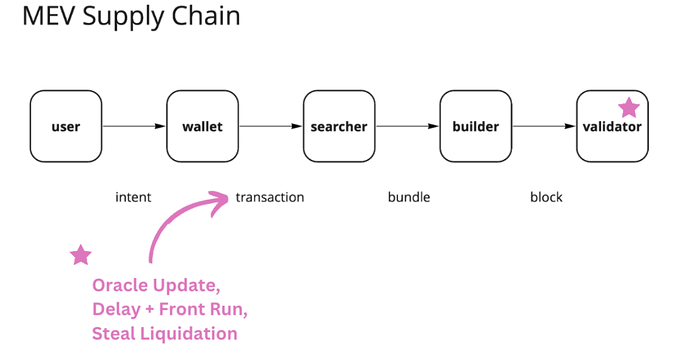Posting some of this here, majority of text is on EigenLayer forum.
Thanks to Quintus, Tina, Josh, Calvin and others for insight and/or review.
Cross-domain MEV pushes permissionless systems towards centralization, opening them to capture and weakening credible neutrality. Re-staking and cross-staking lets single entities order blockspace in different domains, earning MEV inaccessible to others.
In Cosmos, block building is not evenly dispersed among nodes. With mesh security, a few nodes would control even more of their networks thanks to x-domain MEV. With EigenLayer (EL), sophistication, capital, and good infra will produce similar outcomes, possibly entrenching players and harming neutrality.
The basics were laid out here, but the space for X-domain MEV goes beyond this initial example that explored cross-domain MEV with oracles. EL encourages a new type of integration within its 3-role MEV market where nodes get self-referential MEV. E.g., nodes can manipulate state prior to proposing a block, creating a major incentive for exclusive order flow and for proposers collusion.
Swap out Chainlink for re-staked nodes and EL can generate exclusive order flow and encourage proposers (who may just be themselves) to collude to get unique MEV.
While mitigation mechanisms exist, most fall short. And due to delayed slashing on EL, mitigation using fallbacks (e.g., user Oracle 2 when Oracle 1 censors) aren’t very powerful, meaning EL can withhold services until collusion is viable. In the following, I run through an Oracle example in depth, then offer a few brief instances of other x-domain opportunities with EL. Then, I consider what to do about these issues, considering Barnabe’s Protocol-Enforced Proposer Commitments and Flashbot’s SUAVE among other things. But before all that, using research from Flashbots and other MEV folks, we examine T-Shaped collusion.
Continued on EigenLayer forum.

